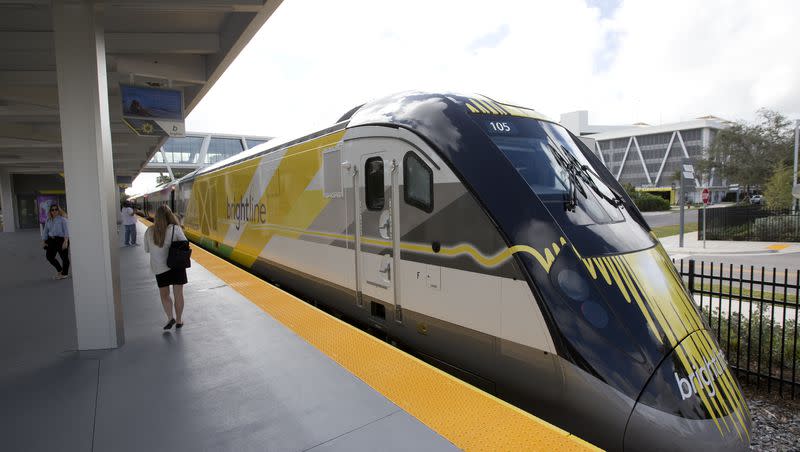Is a high-speed train between Vegas and L.A. closer to leaving the station?

A planned high-speed electric rail line between Los Angeles and Las Vegas received a $3 billion commitment from the Biden administration, covering about a quarter of the cost of the controversial project.
A bipartisan group of Nevada and California lawmakers has pushed for federal funding for months, pitching Brightline West as a needed economic driver, according to The Hill. The money will come from the bipartisan infrastructure law.
“This historic high-speed rail project will be a game changer for Nevada’s tourism economy and transportation,” Sen. Jacky Rosen, D-Nev., said in a statement. “It’ll bring more visitors to our state, reduce traffic on the I-15, create thousands of good-paying jobs, and decrease carbon emissions, all while relying on local union labor.”
Brightline, the only private passenger rail company operating high-speed service in the country, requested $3.75 billion for the project out of an estimated $12 billion cost, per the Hill. The company launched a high-speed Orlando-to-Miami service earlier this year.
Related
The 218-mile route in the West includes a flagship station in Las Vegas, with California stations in Apple Valley, Hesperia and Rancho Cucamonga. At speeds of more than 186 miles per hour, trains will take passengers from Las Vegas to Rancho Cucamonga, which is 37 miles east of downtown Los Angeles, in just 2 hours and 10 minutes — twice as fast as the normal drive time, according to Electrek.
The $3 billion federal grant injects new life into the long-stalled project hailed by supporters as the future of public transportation but bemoaned by critics for their high price tags and lengthy construction times, The Associated Press reported.
In 2008, California voters approved a bond for a 500-mile project that promised to carry passengers between Los Angeles and San Francisco in under three hours on a fully electric train traveling at speeds of up to 220 mph. At the time, the project was projected to cost about $30 billion and be up and running by 2020. No tracks have been laid.
The route between Las Vegas and Los Angeles has been talked about for decades. Rosen told reporters the project now has all required right-of-way and environmental approvals, along with labor agreements, for work to start on the line along the I-15 corridor.
A construction start date was not announced. But Rosen said electric-powered trains could be carrying passengers by the time Los Angeles hosts the Summer Olympics in 2028.
Related
Utah transportation officials and a private company are exploring the possibility of train service between Salt Lake City and Las Vegas. But it wouldn’t be a high-speed or “bullet” train. It would take about eight hours from the Wasatch Front to Las Vegas.
As the Deseret News reported in September, Dreamstar Lines Inc., based in Newport Beach, California, is already well down the track toward setting up regular overnight rail service between Los Angeles and San Francisco. An official said the company hopes to have an entirely privately funded service in operation by early 2025.
But before that’s done, the company already has started seriously studying regular service between Salt Lake City and Los Angeles, with a major stop in Las Vegas. That line could be ready a few years after the California line begins.
Meantime, the Utah Transit Authority applied for a grant through the Federal Railroad Administration to study the possibility of a rail line from Salt Lake City to Las Vegas, to the south, and to Boise, to the northwest. It would be a revival, of sorts, of portions of Amtrak’s old Desert Wind and Pioneer lines, respectively, which died for lack of interest.
Utah, Idaho and Nevada are seeking federal planning funds for the projects through the Corridor Identification and Development Program. But Utah learned Thursday it was not selected for the grant.
Related

